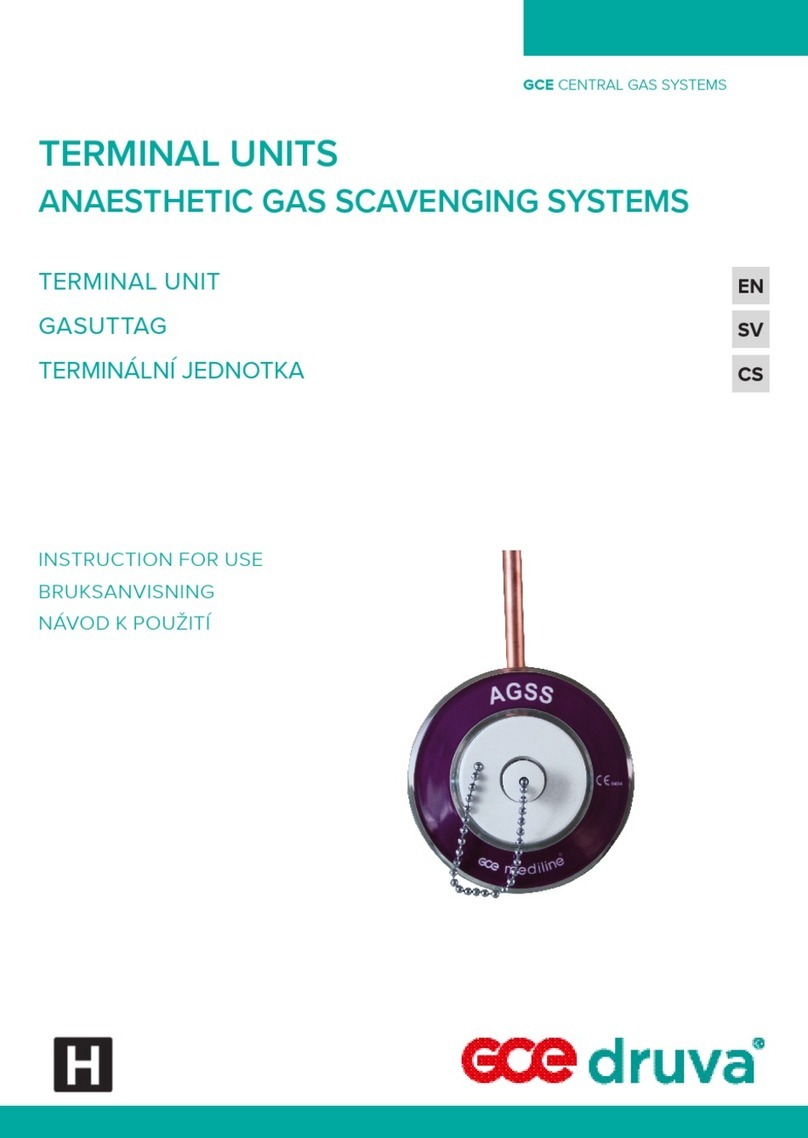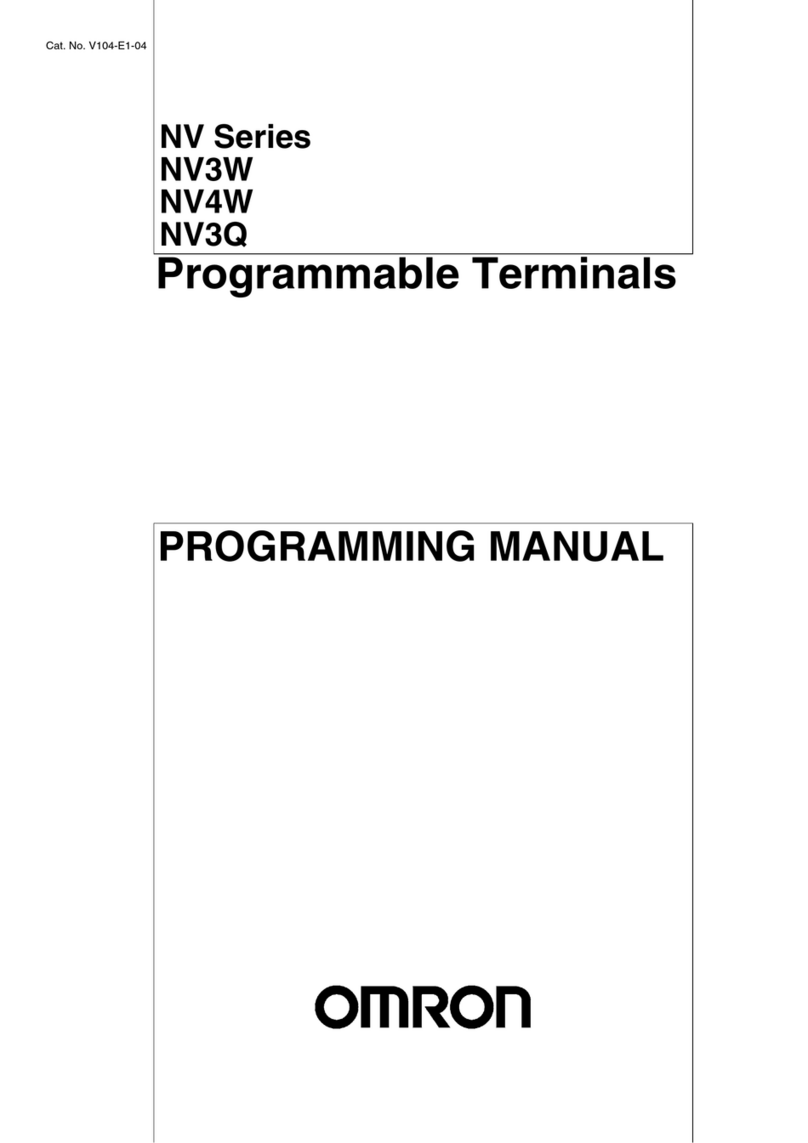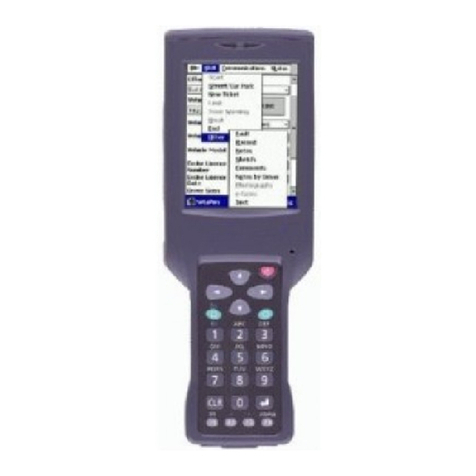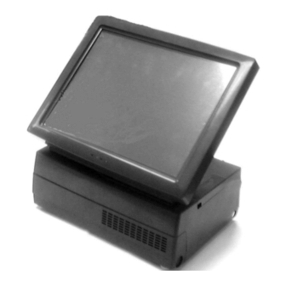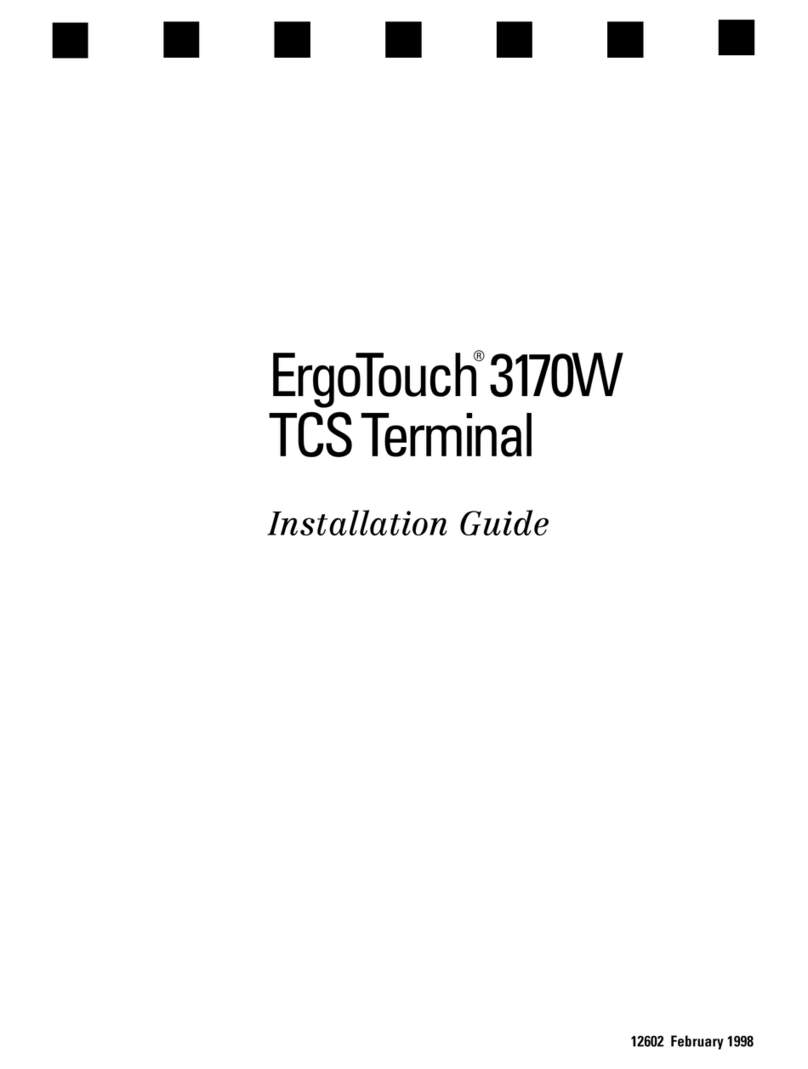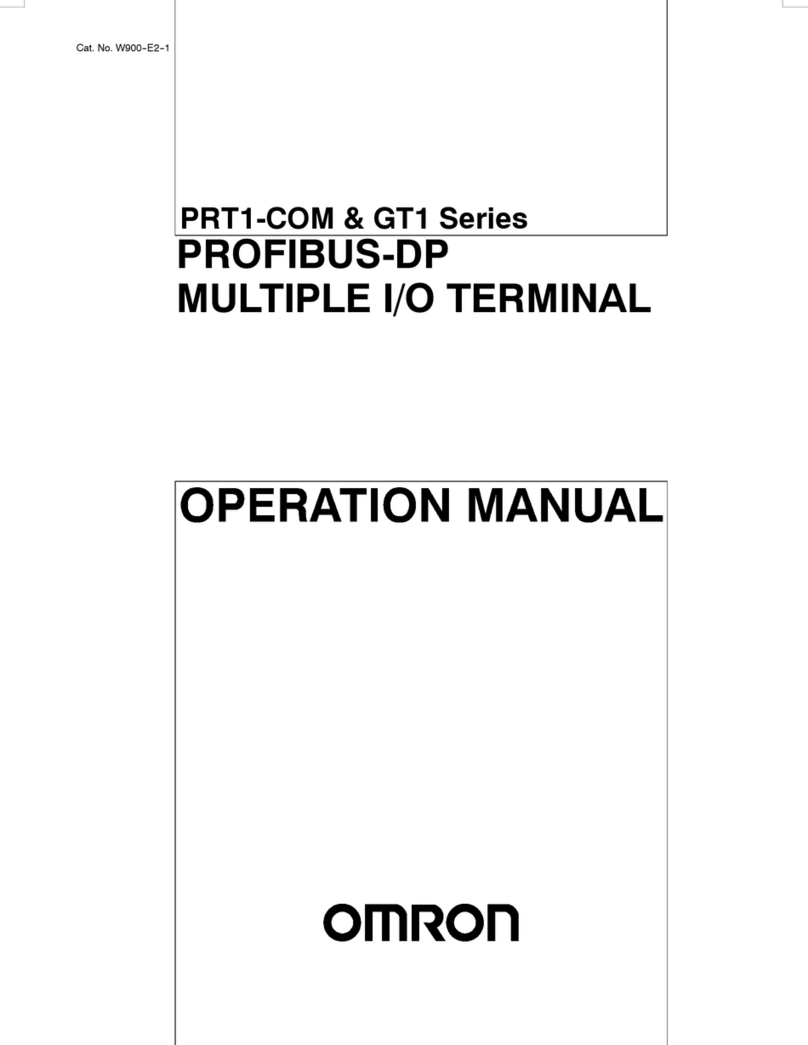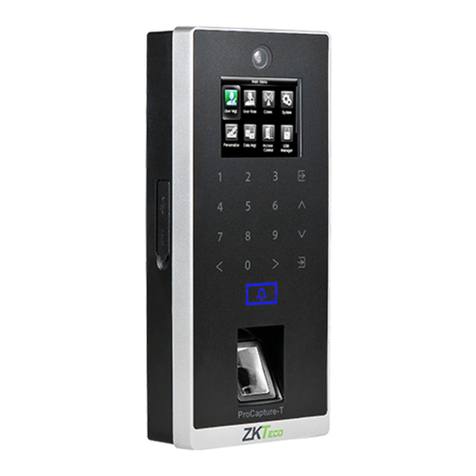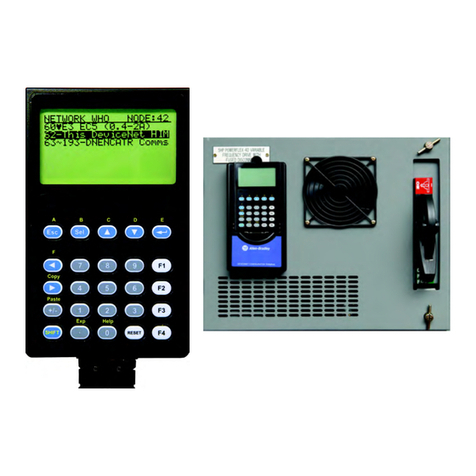GCE druva MC70 User manual

GCE CENTRAL GAS SYSTEMS
EN
TERMINAL UNITS MC70
TERMINAL UNITS,INSTRUCTION FOR USE
GASUTTAG,BRUKSANVISNING
GASSUTTAK,BRUKSANVISNING
GASUDTAG,BRUGERVEJLEDNING
PÄÄTEYKSIKÖT,KÄYTTÖOHJE
PUNKTY POBORU GAZU,INSTRUKCJA OBSŁUGI
TOMADA, INSTRUÇÕES DE UTILIZAÇÃO
TOMA DE GASES MEDICINALES,INSTRUCCIONES DE USO
SV
NO
DA
FI
PL
PT
ES

2/96
EN
1. FOREWORD
GCE Terminal units (“TU”) are medical devices classified as Class IIb ac-
cording to the Directive concerning medical devices
(93/42/EEC – MDD2007/47/EC).
Conformity with essential requirements of the Directive 93/42/EEC –
MDD2007/47/EC is on the basis of the EN ISO 9170-1 standard.
2. INTENDED USE
TU are intended to be used as outlet points at hospital low pressure gas
supply system. TU is an outlet point where operators connect and dis-
connect an inlet of other gas specified medical devices, such as medical
hoses, flowmeters,etc.
The TU are designed to be gas specific which means that they cannot be
connected to a medical device that is for a dierent type of gas.
TU cannot be placed into operation before these instructions are thor-
oughly read and understood.
Operator of TU must be properly trained for such operation - see chapter
4.
BASIC VARIANTS OF TU DIVISION ACCORDING TO THE GAS:
• Oxygen (O2)
• Medical air (AIR)
• Air for running surgical tools (AIR-800)
• Laughing gas (nitrous oxide)
(N2O)
• mixtures of the specified gases
• Underpressure (Vacuum)
(VAC)
• Nitrogen (N2
• Carbon dioxide (CO2
ENGLISH
INSTRUCTION FOR USE: TU MC70

3/96
EN
3. OPERATIONAL, TRANSPORT AND STORAGE
SAFETY REQUIREMENTS
KEEP THE PRODUCT AND ITS ASSOCIATED EQUIPMENT AWAY FROM:
• All sources of heat
• Flammable materials
• Oil or grease (including all hand creams)
• Water
• Dust.
The product and its associated equipment must be prevented from fall-
ing.
Always maintain oxygen cleanliness standards.
Use only the product and its associated equipment in a well ventilated
area.
OPERATING CONDITIONS STORAGE, TRANSPORT
CONDITIONS
-20/+60 °C -30/+70 °C
10/100% 20/70%
600/1200 mbar 600/1200 mbar
Before first use the product must be kept in its original packaging to en-
sure that the product is not contaminated. For transport and storage GCE
recommends use of the original packaging (including internal sealing bag
and caps). Statutory laws, rules and regulations for medical gases, accident
prevention and environmental protection must be observed.
SAFETY OPERATION
TU described in this document must only be used with medical gases
and the procedures for the safe and eective use of these medical com-
pressed gases must be followed at all times.
4. PERSONNEL INSTRUCTIONS AND TRAINING
According to Medical Devices Directive 93/42/EEC the product provider
must ensure that all personnel handling the product are provided with the
operating instructions & performance data and are fully trained to carry out
that operation. Trainees need to be supervised by an experienced person.
Do not use the device without being trained. Training can be only done
by a person with an appropriate education, experience and knowledge
that has been also trained by the manufacturer.

4/96
EN
For further information about training programs, please contact GCE.
5. PRODUCT DESCRIPTION
TU consist of two basic parts:
• housing
• quick connection valve
Individual parts must always be designed as gas specific. Each of these
basic parts is marked with stamping displaying the gas for which it is in-
tended.
An integral part of each terminal unit is a check valve enabling the through-
pass of the gas when a counterpart is connected and which automatically
prevents the gas from passing through when the counterpart is discon-
nected.
108
7
Guide slot
6 10 4 3 2 15
9
1. Locking ring
2. Push button
3. Cover screw
4. Transparent cover plate
5. Name plate
6. Quick connection valve
7. Housing holder
8. Housing
9. Holding screw
10. Connection nut

5/96
EN
6. INSTALLATION
Installation can only be done by a person that has the appropriate certifi-
cates according to the required national standards and laws for mount-
ing and repairs of concerned gas medical devices. Standards valid for
such installations and testing are ENISO7396-1 for medical central gas
systems and ENISO5359 for installations with low pressure hoses. For
more information contact GCE or distributor of GCE products.
For more information contact GCE or distributor of GCE products.
Do not connect the housing to pipeline with dierent type of gas.
During mounting use always appropriate and functional tools and keep
all safety requirements for operation, transport, storage (see chapter 3).
Ensure that all devices, equipment and also hands and work wear are
kept clean and free from oil and grease.
6.1. VISUAL CHECK BEFORE INSTALLATION
• Check that all components in the package (including labels) are not
damaged. If they are damaged, withdraw them from service and label.
• Visually check if the product is clean, if needed follow the procedure for
cleaning that is described in this instruction for use.
6.2. INSTALLATION
• Before assembly please blow through the internal space of the pipeline.
• Check whether the sealing (8) is present before installation of the check
valve subassembly.
• Check whether the unit case is identical with the marking of the gas on
the pipeline.
The minimum inter-axis distance between 2 sockets must be a minimum of
100 mm; the following order should be respected beginning from the left.
10 cm 10 cm 10 cm
1 2 3 4
O2N2O Medical Air Medical aspirator
(vacuum)

6/96
EN
6.2.1. IN THE REAR WALL BEFORE THE FRONT WALL IS MOUN
TED
10815 16 11
14
17 6 10 5 4 3 2 1
12 13 7 9
Side view
Rear wall Front
wall
View from above
Guide slot
a
FIRST CHECK THAT THE VALVE BODY IS FOR THE CORRECT TYPE OF
GAS!
The valve is plugged and leakage-tested upon delivery.
• Measure the distance between the walls (a).
• Adjust the mounting brackets (17) to correct measurement (1) (see sketch
above) and tighten by means of the screws (13) and nuts (14) to the wall
box brackets (16)
• Mark out where to place the wall box (11).
• Mount the wall box to the rear wall with two enclosed plaster screws (12).
• Insert the copper pipe on the valve body (8) into the wall box (11) and
through the prebored hole (from the front side of the wall).
• Slip the rubber bushing (15) over the copper pipe and fix it to the wall
box (11).
• Place the valve body (8) in position and fasten it with the two enclosed
hexagonal screws (9) by means of an allen key. Use the protecting cover
until the valve is mounted, so that dust will not contaminate the valve
body.
• Solder the copper pipe to the correct gas pipe (use cadmium-free silver
solder).
• Make a pressure test of the pipe connection.
• Continue the assembly after a hole ca 78 mm is taken up on the correct
place of the front wall and the wall is mounted.
• Unscrew the connecting nut (10) and remove the tightening plug.

7/96
EN
• Mount the quick connection valve (6) after checking that the O ring is
correctly positioned. Tighten by means of the special tool 325 197 290
and check during the tightening that the guide slot is positioned up-
wards, corresponding to 12 on a clock face. (See sketch.)
• Place the correct name plate (5) on the transparent cover plate (4) (the
screw holes shall be in horizontal position) and mount it with the two
screws (3). (Do not use too much force!)
• Fasten the push plate (2) with the circlip (1)
• Test the function of the coupling by connecting a dosage device with a
male coupling. The coupling should only release its grip when the push
plate (2) is pressed inwards.
6.2.2. IN THE FRONT WALL BEFORE THE REAR WALL IS MOUN
TED
10815 16 11 6 10 5 4 3 2 1
12 7 9
Guide slot
Side view
FIRST CHECK THAT THE VALVE BODY IS FOR THE CORRECT TYPE OF
GAS!
The valve is plugged and leakage-tested upon delivery.
• Take up a hole diameter ca 78 mm on the front wall where the outlet valve is
to be placed.
• Put the wall box (11), from the rear side of the front wall, on its place and fas-
ten it by means of the two plaster screws (12). (The mounting brackets with
screws and nuts are not needed when front wall mounting is used.)
• Insert the copper pipe on the valve body (8) into the wall box (11) and through
the prebored hole (from the front side of the wall).
• Slip the rubber bushing (15) over the copper pipe and fi x it to the wall
• box (11).
• Place the valve body (8) in position and fasten it with the two enclosed hex-
agonal screws (9), by means of an allen key. Use the protecting cover until the
valve is mounted, so dust will not contaminate the valve body.
• Solder the copper pipe to the correct gas pipe (use cadmium-free silver sol-
der).
• Make a pressure test of the connection.

8/96
EN
• Unscrew the connecting nut (10) and remove the tightening plug.
• Mount the quick connection valve (6) after checking that the O-ring is correctly
positioned. Tighten by means of the special tool 325 197 290 and check dur-
ing the tightening that the guide slot is positioned upwards, corresponding to
12 on a clock face. (See sketch.)
• Place the correct name plate (5) on the transparent cover plate (4) (the screw
holes shall be in horizontal position) and mount it with the two screws (3). (Do
not use too much force!)
• Fasten the push plate (2) with circlip (1).
• Test the function of the coupling by connecting a dosage device with a male
coupling. The coupling should only release its grip when the push plate (2) is
pressed inwards.
6.2.3. EXPOSED GAS OUTLET MC 70
8 10 6 10 11 45 2 1
127 3
Side view
Guide slot
FIRST CHECK THAT THE VALVE BODY IS FOR THE CORRECT TYPE OF
GAS!
The valve is plugged and leakage-tested upon delivery.
• Mark out where to place the outlet valve.
• Place the valve body (8) in position on the wall and fasten it with the two
enclosed plaster screws (12).
• Solder the copper pipe to the correct gas pipe (use cadmium-free silver sol-
der.)
• Make a pressure test of the pipe connection. Use the protecting cover until
the valve is mounted, so that dust will not contaminate the valve body.
• Unscrew the connecting nut (10) and remove the tightening plug.
• Mount the quick connection valve (6) after checking that the O-ring is correctly
positioned. Tighten by means of the special tool 325 197 290 and check dur-
ing the tightening that the guide slot is positioned upwards, corresponding to
12 on a clock face. (See sketch.)
• Place the correct name plate (5) on the transparent cover plate (4) (the screw
holes shall be in horizontal position) and mount it placed in the wall box (11)
with the two screws (3). (Do not use too much force!)

9/96
EN
• Fasten the push plate (2) with the circlip (1).
• Test the function of the coupling by connecting a dosage device with a male
coupling. The coupling should only release its grip when the push plate (2) is
pressed inwards.
6.3. TEST AFTER THE CARRYING OUT OF INSTALLATION
6.3.1. TEST OF FUNCTIONALITY AND LEAKAGE TEST AFTER THE
END OF INSTALLATION
• For the test of functionality and leakage test use the gas for which the
terminal unit is intended or the medical air or nitrogen with pressure as
specified in Chapter 2.
• Test the connectivity of counterparts of all installed terminal units, for
variants with the positioning of a counterpart of the quick connector
verify the right orientation of the quick connectors.
• Test the through-pass capacity of the terminal unit for presence of gas
on the outlet.
• Test the general tightness of the terminal unit and with all accessories
in the state with connected as well as disconnected counterparts of the
quick connectors. The leakage must not exceed 0.296 ml/min in any of
the described conditions (this corresponds to a change in the pressure
0.03 kPa.l/min for the leakage test for a pressure drop).
• Clean the terminal unit from possible impurities and check the integrity
and presence of all labels and markings.
Installation and testing procedures must be in compliance with EN ISO
7396-1 and EN ISO 5359 standards.
7. OPERATIONS
7.1. BEFORE OPERATION
7.1.1. PREPARATION FOR USE OF TU
• Check if the TU (including label) does not show any visible external
damage. If there are signs of external damage, ensure the unit is not
and label. Contact the responsible personnel and call service - see
chapter 9.2.
• Check visually if the product is clean, if cleaning is needed follow pro-
cedures described further in this instruction for use.
TU can be used only for the gas specified on the cover. Never try to use
it for dierent type of gas.
7.2. CONNECTION OF TERMINAL UNITS
7.2.1. LIST OF KNOWN ACCESSORIES
Hoses, flow rate meters, fans, underpressure reducing valves, suction eje-
tors.

10/96
EN
Any devices used with TU must be compatible with the gas for which TU
is intended for.
Always make sure the device is connected first and then used on the
patient.
7.2.2. CONNECTION OF MEDICAL DEVICES TO QUICK CONNEC
TORS
• Connect the medical devices used in accordance with EN ISO 9170-1
and the appropriate national standards SS8752430.
• Check whether there is gas on the outlet of the medical device con-
nected (e.g. by setting the flow rate of the flow rate meter connected).
• Use the medical device connected in accordance with the manufac-
turer’s instructions.
7.3. AFTER EVERY USE
Disconnect the medical devices used from the terminal unit.
8. CLEANING
Remove dirt with a soft cloth damped in oil free oxygen compatible soap
water and rinsed with clean water. Disinfection can be carried out with an
alcohol-based solution (spray or wipes).
If other cleaning solutions are used, check that they are not abrasive and
that they are compatible with brass, plastic materials of components, and
gas.
Do not use cleaning solutions containing ammonia!
Do not immerse in water or any liquid.
Do not expose to high temperature.
9. LIFETIME OF THE PRODUCT, MAINTENANCE
AND SERVICING
9.1. BATCH NUMBER AND PRODUCTION DATE
The number stamped on the terminal unit body consists of the following
data: GCE logo XXXXXXX
XXXXXXX: batch number
For example: The number 7366506 indicates a product with the batch
number 7366506.
9.1.1. PRODUCT LIFETIME AND WASTE MANAGEMENT
Housing - the maximum lifetime of this part of the product is given by the
lifetime of non-metallic materials used in the device and equals to the life-
time of materials used in the pipeline distribution system.

11/96
EN
Quick connection valve - the maximum lifetime is 10 years. The owner of
the equipment must avoid any repeated use of the product (appropriate
marking, degradation …).
Maintenance, servicing and repairs are described below.
At the end of the product’s life time (max. 10 years), the product must be
withdrawn from service. The owner of the device shall prevent the reuse
of the product and handle the product in compliance with “Directive of
European Parliament and Council 2006/12/ES of 5th April 2006 on waste“.
In accordance to Article 33 of REACH GCE, s.r.o. as responsible
manufacturer shall inform all customers if materials containing 0.1% or
more of substances included in the list of Substance of Very High Concern
(SVHC).
The most commonly used brass alloys used for bodies and other brass
components contain 2-3% of lead (Pb), EC no. 231-468-6, CAS no. 7439-
92-1. The lead will not be released to the gas or surrounding environment
during normal use. After end of life the product shall be scrapped by an
authorized metal recycler to ensure ecient material handling with minimal
impact to environment and health.
To date we have no information that indicates that other materials
containing SVHC of concentrations exceeding 0.1% are included in any
GCE product.
9.2. MAINTENANCE
GCE recommends the product owner to make regular visual inspections
at least once a year, including checks for tightness and right functioning of
the terminal unit (See Chapter 6.2).
Maximum usability time within the framework of the maintenance shall be
10 years.
Some repairs within the framework of the maintenance concerning re-
placement of damaged or missing parts can be carried out by the product
owner. It is possible to replace the following parts only:
• labels
Use only original spare parts.
All sealing and o-rings must be stored by provider or operator in a dry,
dark and clean storage during the complete lifetime.
9.3. SERVICING AND REPAIRS
Repair of TU can only be done by a person that owns appropriate certifi-
cates according to national standards for mounting and repair of medical
devices, including EN ISO 7396-1 and EN ISO 5359 standards.
For more information and actual list of spare parts contact GCE or distribu-
tor of GCE products.
Use only original GCE components!

12/96
EN
MANUFACTURER:
GCE s.r.o. Tel : +420 569 661 111
Zizkova 381 Fax : +420 569 661 602
583 01 Chotebor http://www.gcegroup.com
Czech Republic © GCE s.r.o.
10. GLOSSARY
Consult instruction for
use
Suitable for Hospital care
use
Caution Keep dry!
Keep away from heat
and flammable material REF Reference number
Keep away from oil and
grease LOT Batch number
Upper and lower humid-
ity limit Fragile
Upper and lower
temperature limit Use by date
Date of manufacture Manufacturer
A: Input parameter B: Output parameter
11. WARRANTY
The Standard Warranty period is two years from date of receipt by the GCE
Customer (or if this is not known 2 years from time of the product manu-
facture shown on the product).
The standard warranty is only valid for products handled according to In-
struction for use (IFU) and general industry good practice and standards.

13/96
SV
1. INLEDNING
Gasuttag från GCE är medicinska hjälpmedel klassificerade i klass IIb enl.
direktivet om medicintekniska produkter 93/42/EEC..
Överensstämmelsen med grundkraven i direktivet 93/42/EEC baseras på
norm ENISO 9170-1.
2. AVSEDD ANVÄNDNING
Gasuttag är avsedda att användas i sjukhusets lågtrycks gasförsörjnings-
system. Till Gasuttagsenheten kan operatörer ansluta och koppla ett gas-
specifikt inlopp till medicintekniska produkter, såsom medicinska slangar,
flödesmätare etc.
Gasuttaget är utformade för att vara gas specifikt vilket innebär att de inte
kan anslutas till en medicinteknisk produkt som är av en annan typ av gas.
GASUTTAG får inte tas i drift innan dessa instruktioner är noggrant lästa
och förstådda.
GASUTTAGS-användare måste vara väl utbildade för sådan drift – se
kapitel 4.
HUVUDSAKLIGA VARIANTER AV GASUTTAG:
• Andningsoxygen (O2)
• Andningsluft (AIR)
• Instrument-luft (AIR-800)
• Lustgas (nitrous oxide)
(N2O)
• Blandgas
• Vacuum (VAC)
• Nitrogen (N2
• Medicinsk koldioxid (CO2
SVENSKA
BRUKSANVISNING: TU MC70

14/96
SV
3. SÄKERHETSKRAV VID DRIFT, TRANSPORT OCH
FÖRVARING
HÅLL PRODUKTEN, INKL. TILLBEHÖR, BORTOM PÅVERKAN FRÅN:
• värmekällor (eld, cigaretter,..)
• brännbara material,
• olja eller fett, (var speciellt försiktig vid användnig av handkrämer)
• vatten,
• damm.
Produkten, inkl. tillbehör, måste vara skyddad mot vältning.
Följ alltid renlighetsföreskrifter för syrgas.
Använd endast produkten, inkl. tillbehör, i väl ventilerade utrymmen.
DRIFT
FÖRUTSÄTTNINGAR
LAGRING OCH
TRANSPORT
-20/+60 °C -30/+70 °C
10/100% 20/70%
600/1200 mbar 600/1200 mbar
Före första användning skall produkten behållas i sitt originalemballage. I
det fall den tas ur drift (för transport, eller förvaring), rekommenderar GCE
att originalemballaget används (inkl. inre utfyllnadsmaterial).
Nationella lagar, kungörelser och föreskrifter för medicinska gaser, arbetar-
skydd och miljö skall följas.
DRIFTSÄKERHET
Gasuttag som beskrivs i detta dokument får endast användas för medicin-
ska gaser och säkerhetsföreskrifter för säker och tillförlitlig användning av
dessa medicinska komprimerade gaser måste följas i alla lägen.
4. INSTRUKTION OCH UTBILDNING AV PERSONAL
Enligt Medicintekniska direktivet 93/42/EEG skall användaren av produk-
ten se till att all personal som hanterar produkten har tillgång till bruksan-
visning och tekniska data om produkten, samt att personalen har erhållit
regelmässig utbildning för den aktuella användningen. Praktikanter måste
övervakas av en erfaren person.
Använd inte apparaten utan att vara utbildad på produkten. Utbildningen
kan endast göras av en person med lämplig utbildning, erfarenhet och
kunskap som har också har utbildats av tillverkaren.

15/96
SV
Om ytterligare information angående CGE:s utbildningprogram behövs,
kontakta GCE.
5. PRODUKTBESKRIVNING
Gasuttagsenheter består av två huvuddelar:
• hus
• snabbkopplingsventil
Enskilda delar måste alltid utformas för samma typ av gas.
Vart och ett av dessa grundläggande delar är markerade med stämpling
som visar för vilken gas det är avsett.
En integrerad del av varje gasuttagsenhet är en backventil som släpper
igenom gasen när en motpart är ansluten men stänger automatiskt och
förhindrar gasen från att passera genom när motparten kopplas bort.
108
7
Guide slot
6 10 4 3 2 15
9
1. Låsring
2. Tryckknapp
3. Täckskruv
4. Transparent täckplatta
5. Namnskylt
6. Snabbkopplingsventil
7. Hållare för hus
8. Hus
9. Fästskruv
10. Anslutningsmutter

16/96
SV
6. INSTALLATION
Installationen kan bara göras av en person som har rätt certifikat i enlig-
het med de föreskrivna nationella standarder och lagar för montering och
reparationer av berörda medicintekniska gasprodukter. Standarder som
gäller för sådana installationer och tester är EN ISO 7396-1 för medicin-
ska centralgassystem och EN ISO 5359 för installationer med lågtrycks-
slangar. Kontakta GCE eller distributörer av GCE-produkter för mer in-
formation.
Anslut inte ventilenheten till en rörledning med en annan typ av gas.
Vid montering, använd alltid verktyg som är avsedda för det tänkta arbe-
tet och att alla säkerhetskrav för drift, transport och lagring uppfylls (se
kapitel3). chapter 3).
Se till att alla apparater, utrustning och även händer och arbetskläder
hålls rena och fria från olja och fett.
6.1. VISUELL KONTROLL FÖRE INSTALLATION
• Kontrollera att inga komponenter i paketet (inklusive etiketter) är ska-
dade. Om de är skadade, ta dem ur drift och märk dem.
• Kontrollera visuellt om produkten är ren och om det behövs följs proce-
duren för rengöring som beskrivs i denna bruksanvisning.
6.2. INSTALLATION
• Före montering, vänligen blås rent rörledningen invändigt.
• Kontrollera att tätningen (8) finns med innan installation av den samman-
satta backventilenenheter.
• Kontrollera om gasuttagsenhetens hölje är identisk med märkningen av
gasort på rörledningen.
Det minsta centrum avståndet mellan 2 uttag måste vara minst 100 mm,
följande gasordning bör respekteras med början från vänster.
10 cm 10 cm 10 cm
1 2 3 4
O2N2O Medical Air Medical aspirator
(vacuum)

17/96
SV
6.2.1. MONTAGE I DEN BAKRE VÄGGEN INNAN DEN FRÄMRE
MONTERATS
10815 16 11
14
17 6 10 5 4 3 2 1
12 13 7 9
Sidovy
Bakre
vägg
Främme
väg
Vy ovanifrån
Styrspår
a
KONTROLLERA FÖRST ATT VENTILHUSET ÄR AVSETT FÖR AKTUELL
GASSORT!
OBS! Gasuttaget är pluggat och läckagetestat vid leveransen.
• Mät upp det invändiga avståndet (a) mellan väggarna.
• Justera installationsbanden (17) till rätt mått (a) (se skiss ovan) och fäst
med skruvarna (13) och muttrarna (14) till infästningsdosans konsol (16).
• Markera var infästningsdosan (11) skall placeras.
• Montera infästningsdosan på den bakre väggen med de två medlevere-
rade gipsskruvarna (12).
• För in kopparröret på ventilhuset (8) i dosan (11) och genom det förbor-
rade hålet.
• Träd gummibussningen (15) över kopparröret och fäst den i dosan.
• Placera ventilhuset (8) i läge och fäst det med de två insexskruvarna
(9) med hjälp av spännbrickan (7). Använd insexnyckel. Använd skydds-
locket under tiden tills snabbkopplingsventilen är monterad, så att ven-
tilhuset skyddas.
• Löd kopparröret till aktuell gasledning (använd kadmiumfritt silverlod).
• Gör en tryckprovning för kontroll av lödningen.
• Fortsätt monteringen sedan ett hål, ca 78 mm, har tagits upp i den främre
väggen och väggen är monterad.
• Skruva av överfallsmuttern (10) och ta bort tätproppen.
• Montera snabbkopplingsventilen (6) efter kontroll av att O-ringen är rätt
placerad. Drag åt med hjälp av specialverktyg 325 197 290 och se sam-
tidigt till att styrspåret är riktat uppåt (kl 12). (Se skiss.)

18/96
SV
• Placera aktuell namnskylt (5) på den transparenta frontplattan (4) (skruv-
hålen ska vara i horisontellt läge) och fäst med de två skruvarna (3). (An-
vänd inte för stor kraft.)
• Fäst tryckplattan (2) med låsringen (1).
• Testa kopplingens funktion genom att ansluta en doseringsutrustningis.
6.2.2. MONTAGE I DEN FRÄMRE VÄGGEN INNAN DEN BAKRE
MONTERATS
10815 16 11 6 10 5 4 3 2 1
12 7 9
Styrspår
Sidovy
KONTROLLERA FÖRST ATT VENTILHUSET ÄR AVSETT FÖR AKTUELL
GASSORT!
OBS! Gasuttaget är pluggat och läckagetestat vid leveransen.
• Ta upp ett hål, ca 78 mm, i den främre väggen på den plats gasuttaget
ska placeras.
• Sätt infästningsdosan (11) på plats från baksidan av den främre väggen
och fäst den med två gipsskruvar (12). (Installationsbanden med skruvar
och muttrar behövs inte vid montage i den främre väggen.)
• Från väggens framsida förs kopparröret på ventilhuset (8) in i dosan (11)
och genom det förborrade hålet.
• Från främre väggens baksida träds sedan gummibussningen (15) över
kopparröret och fästs i dosan.
• Från väggens framsida placeras ventilhuset (8) i läge och fästs med de
två insexskruvarna (9) med hjälp av spännbrickan (7). Använd insex-
nyckel. Använd skyddslocket under tiden tills snabbkopplingsventilen är
monterad, så att ventilhuset skyddas.
• Löd kopparröret till aktuell gasledning (använd kadmiumfritt silverlod).
• Gör en tryckprovning för kontroll av lödningen.
• Skruva av överfallsmuttern (10) och ta bort tätproppen.
• Montera snabbkopplingsventilen (6) efter kontroll av att O-ringen är rätt
placerad. Dra åt med hjälp av specialverktyg 325 197 290 och se samti-
digt till att styrspåret är riktat uppåt (kl 12). (Se skiss)

19/96
SV
• Placera aktuell namnskylt (5) på den transparenta frontplattan (4) (skru-
vhålen ska vara i horisontellt läge) och fäst med de två skruvarna (3).
(Använd ej för stor kraft.)
• Fäst tryckplattan (2) med låsringen (1).
• Testa kopplingens funktion genom att ansluta en doseringsutrustning
med hankoppling. Denna ska endast gå att lossa då tryckplattan (2)
pressas inåt.
6.2.3. UTANPÅLIGGANDE MONTAGE GASUTTAG MC70
8 10 6 10 11 45 2 1
127 3
Sidovy
Styrspår
KONTROLLERA FÖRST ATT VENTILHUSET ÄR AVSETT FÖR AKTUELL
GASSORT!
OBS! Gasuttaget är pluggat och läckagetestat vid leveransen.
• Markera var gasuttaget ska placeras.
• Placera ventilhuset (8) i läge på väggen med kopparröret uppåtriktat och
fäst den med de två gipsskruvarna (12).
• Löd kopparröret till aktuell gasledning (använd kadmiumfritt silverlod).
• Gör en tryckprovning för kontroll av lödningen. Använd skyddslocket
under tiden tills snabbkopplingsventilen är monterad, så att ventilhuset
skyddas.
• Skruva av överfallsmuttern (10) och ta bort tätproppen.
• Montera snabbkopplingsventilen (6) efter kontroll av att O-ringen är rätt
placerad. Dra åt med hjälp av specialverktyg 325 197 290 och se samti-
digt till att styrspåret är riktat uppåt (kl 12). (Se skiss.)
• Placera aktuell namnskylt (5) på den transparenta frontplattan (4) (skruv-
hålen ska vara i horisontellt läge). Placera frontplattan i dosan (11) och
fäst med de två skruvarna (3). (Använd inte för stor kraft.)
• Fäst tryckplattan (2) med låsringen (1).
• Testa kopplingens funktion genom att ansluta en doseringsutrustning
med hankoppling. Denna ska endast gå att lossa då tryckplattan (2)
pressas inåt.

20/96
SV
6.3. TEST EFTER UTFÖRD INSTALLATION
FUNKTIONS OCH LECKAGETEST EFTER SLUTFÖRD INSTALLATION
• För test av funktionalitet och täthetskontroll använd gasen för vilken ter-
minalen är avsedd för eller medicinsk luft eller kväve med tryck som
anges i kappitel 2.
• Testa anslutning av motsvarande handelar till alla installerade terminal
enheter, för varianter med positionering av handelen till snabbkoppling-
en kontrollera att orienteringen är rätt.
• Testa genomlopps kapacitet i terminalenheten.
• Gör en allmän täthetskontroll av terminalenheten testa alla tillbehör
både med anslutna samt frånkopplade snabbkopplingar. Läckaget får
inte överstiga 0,296 ml / min i något av de beskrivna fallen (detta mot-
svarar en förändring i trycket med 0.03 kPa/min vid läckage).
• Rengör enheten från eventuella föroreningar och kontrollera integrite-
ten och närvaron av alla etiketter och märkningar.
Installations- och testförfaranden måste vara i enlighet med standarder-
na ENISO 7396-1 och EN ISO 5359.
7. OPERATIONER
7.1. FÖRE ANVÄNDNING
7.1.1. FÖRBEREDELSER FÖR ANVÄNDNING AV TERMINALEN
• Kontrollera om det finns några synliga skador på terminalen (inklusive
etiketter och märkning). Om det visar tecken på yttre skador, undvik
dess användning och gör en utredning om dess status.
• Visuellt kontrollera om produkten är förorenad, och om det behövs, följ
rengörings förfarandet som beskrivs i denna handbok.
• Kontrollera enheten för läckage (t.ex. genom att lyssna efter läckage
som kan vara hörbara).
Terminalenheten kan användas endast för den gas som anges på knap-
pen. Försök aldrig använda den för andra typer av gaser.
7.2. ANSLUTNING TILL GASUTTAG
7.2.1. LISTA ÖVER KÄNDA TILLBEHÖR
Slangar, flödesmätare, fläktar, undertrycksregulatorer, sugejektor.
All utrustning som ansluts till ett GASUTTAG måste vara avsedd för den
gas GASUTTAG är avsett för.
Se alltid till att enheten är ansluten innan patienten behandlas.
Table of contents
Languages:
Other GCE druva Touch Terminal manuals
Popular Touch Terminal manuals by other brands

Protech Systems
Protech Systems PA-3170 Quick reference guide
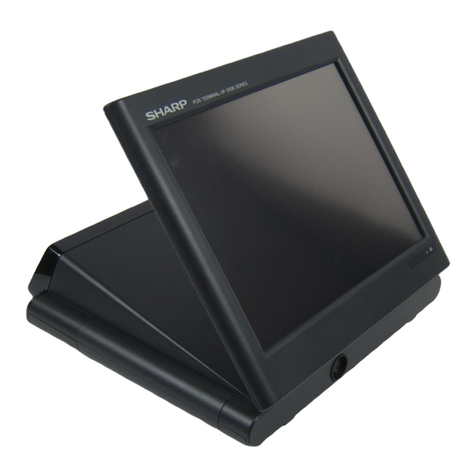
Sharp
Sharp UP-3500 instruction manual

Deister electronic
Deister electronic proxSafe C4 user manual
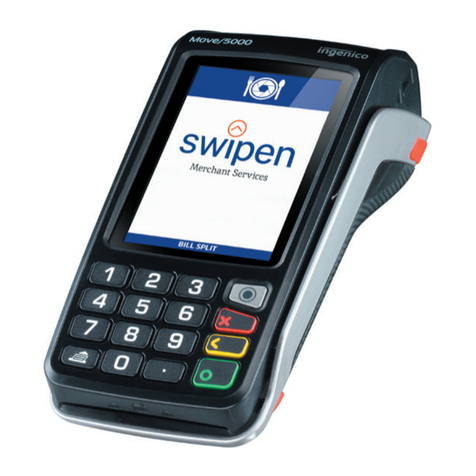
Ingenico group
Ingenico group swipen Move 5000 quick start guide
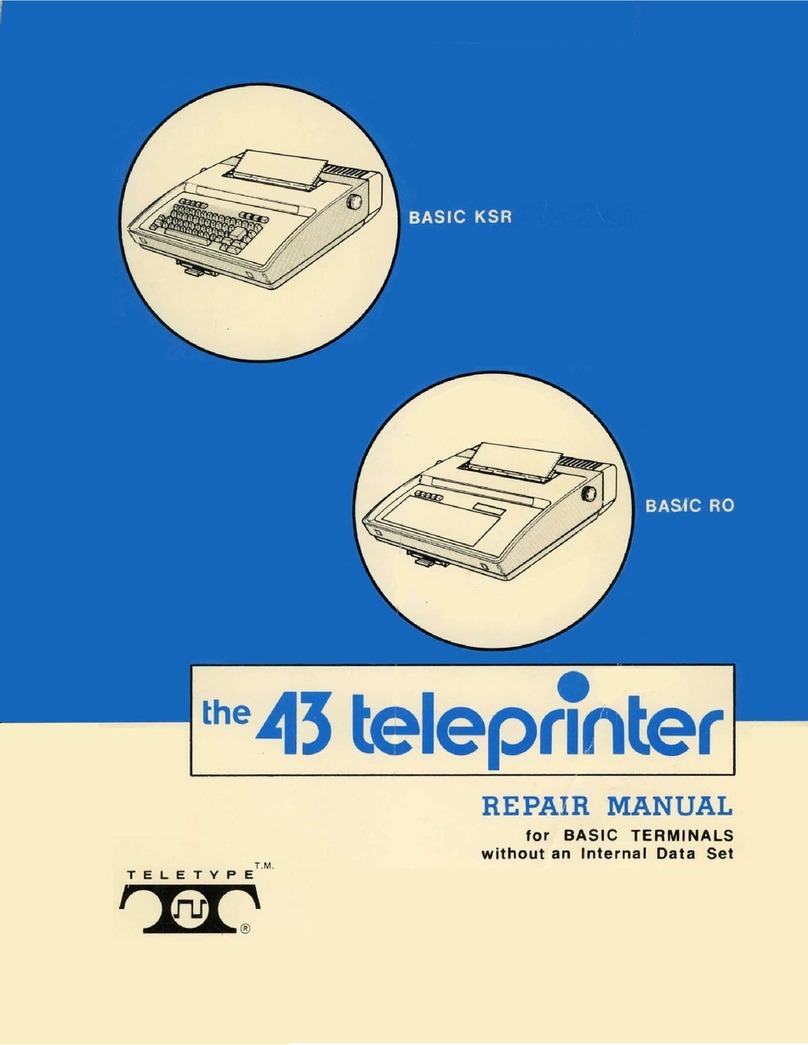
Teletype
Teletype Basic KSR Repair manual
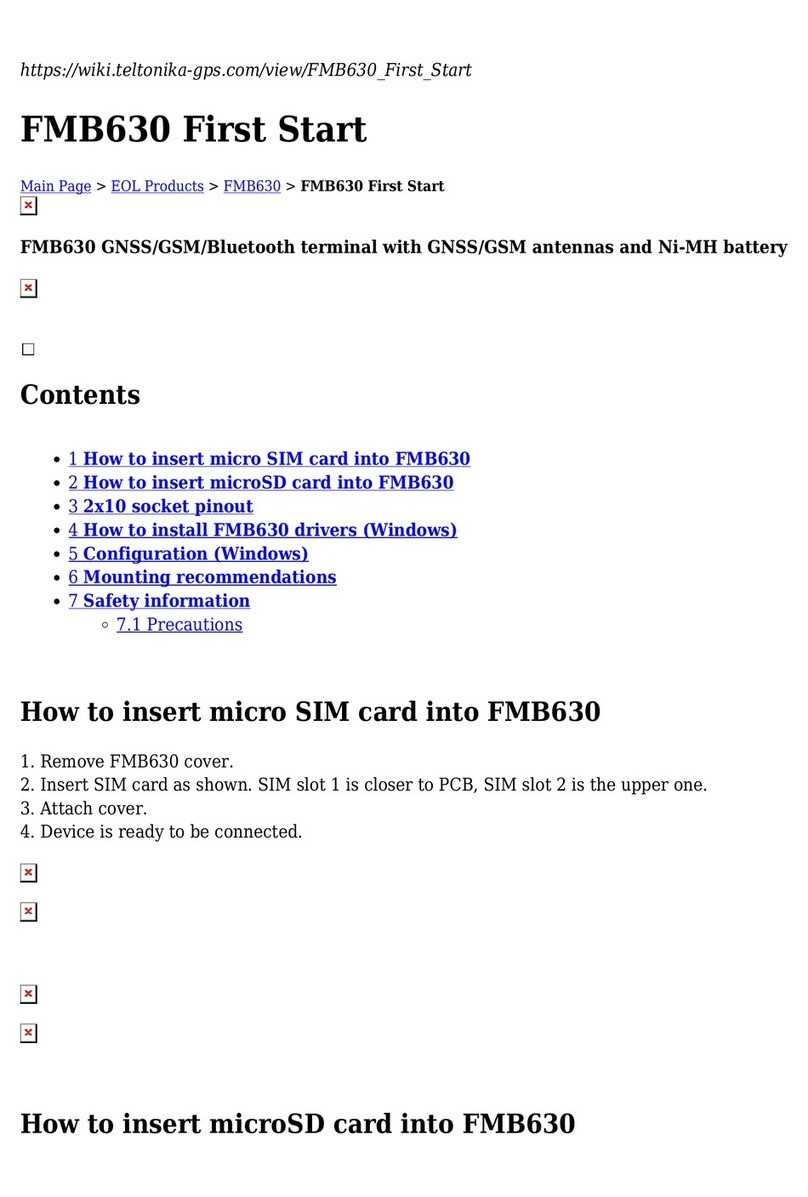
Teltonika
Teltonika FMB630 First start-up quick start guide
